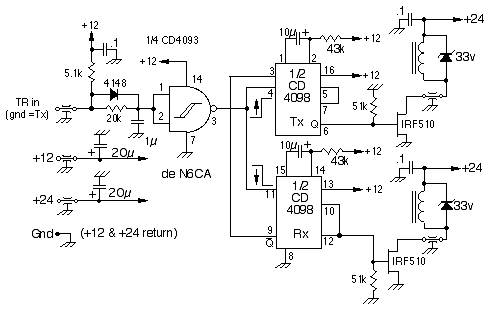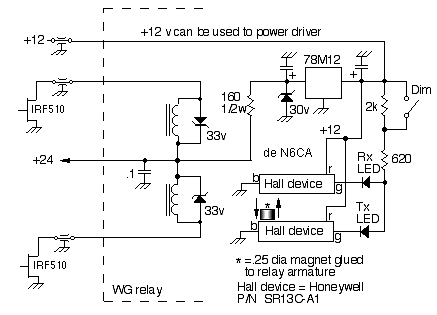Latching Wave Guide Relay Driver
de N6CA August 09, 2002 updated October 30, 2003


-No heat sinking required
-coil drive pulse width set at about 100 ms
-most 28 v relays will drive ok at 24 v
-33v zeners eliminate positive (>33V) spikes and negative
spikes from coils
-use a shielded box with good feed-thru capacitors.....always.
-resistors 1/4 w
Hall effect device waveguide relay
position indicator

Org/red & green LEDs used for similar output. Very bright 20
mcd for daytime and dimmed for night. Output of Hall devices can be
used for interlock on TX if necessary or desired.
back to
N6CA homepage


